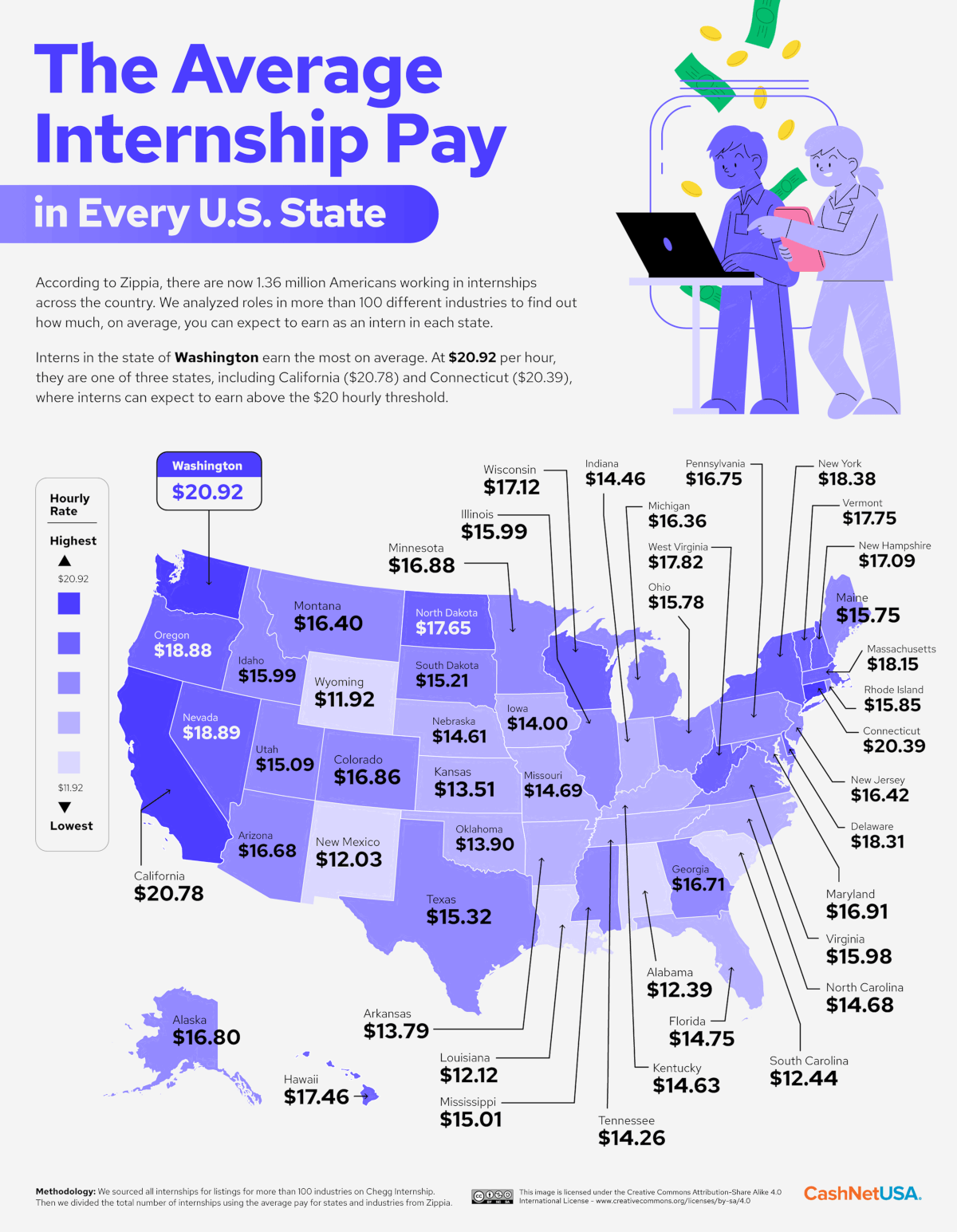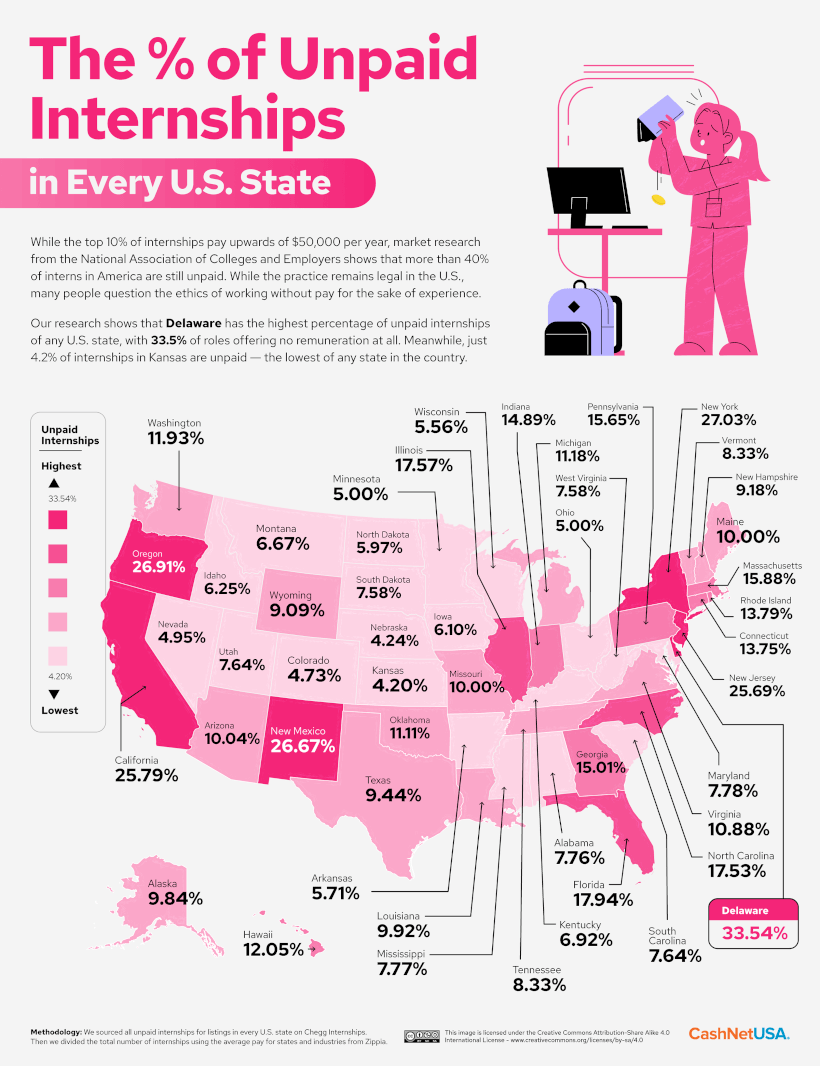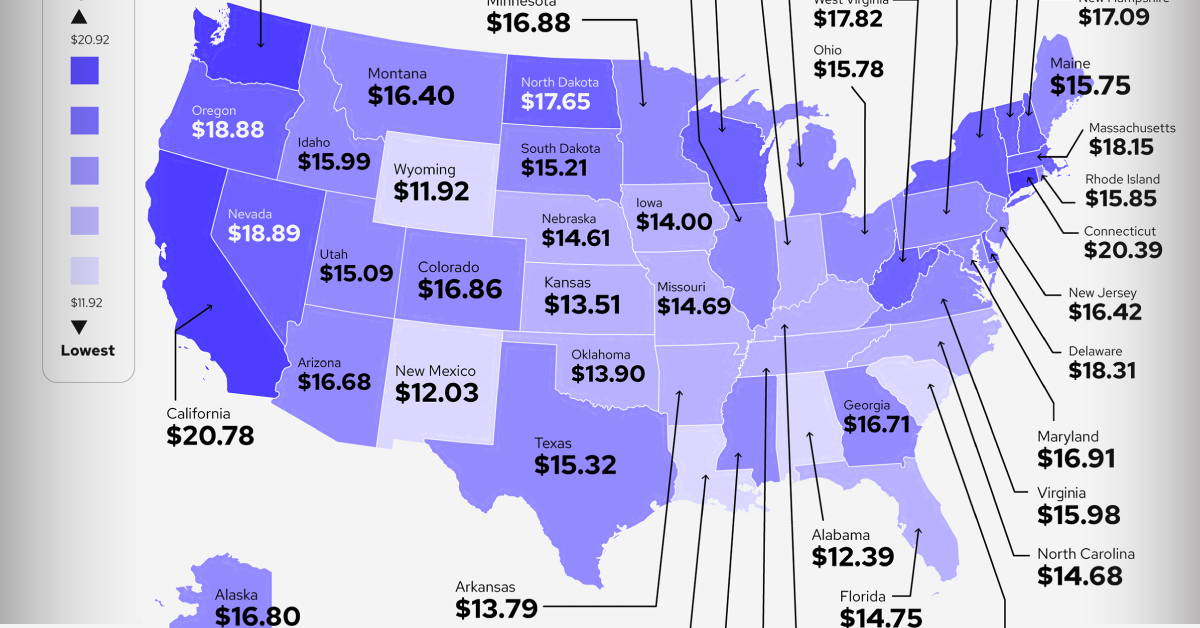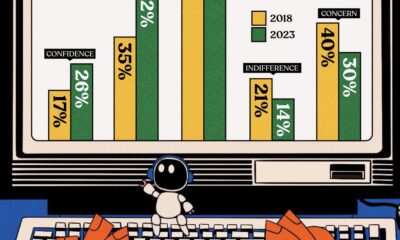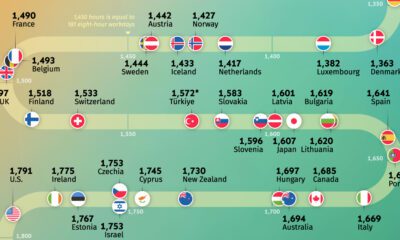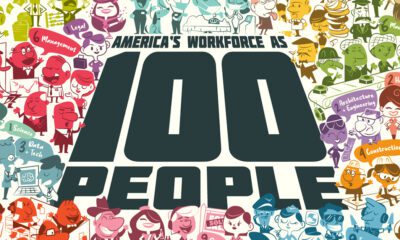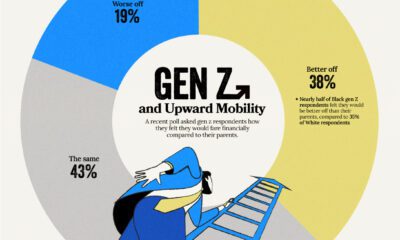Jobs
Mapped: Average Internship Salary By U.S. State in 2022
Click to view this graphic in a higher-resolution.
Mapping The Best Places to Intern in the U.S.
Modern day internships vary wildly by industry, covering anything from coffee runs to working on high-profile projects, and from 90-hour weeks to part-time jobs.
The internship salaries offered also vary wildly by both location and industry. Some are full-time paid positions, others are unpaid, “for the experience” gigs.
Bringing some transparency into the ever-changing internship world, CashNetUSA sourced data in 2022 from listings on Chegg Internships and Zippia, creating a database of internship salary rates by hourly pay across state and sector.
The Highest Average Internship Salary by State
Across the 50 states in the U.S., three stand out above the competition when it comes to the average internship salaries.
Interns in Washington, California, and Connecticut were offered more than $20 an hour, nearly $5 more than minimum wage in each of these states.
| State | Hourly Rate |
|---|---|
| Washington | $20.92 |
| California | $20.78 |
| Connecticut | $20.39 |
| Nevada | $18.89 |
| Oregon | $18.88 |
| New York | $18.38 |
| Delaware | $18.31 |
| Massachusetts | $18.15 |
| West Virginia | $17.82 |
| Vermont | $17.75 |
| North Dakota | $17.65 |
| Hawaii | $17.46 |
| Wisconsin | $17.12 |
| New Hampshire | $17.09 |
| Maryland | $16.91 |
| Minnesota | $16.88 |
| Colorado | $16.86 |
| Alaska | $16.80 |
| Pennsylvania | $16.75 |
| Georgia | $16.71 |
| Arizona | $16.68 |
| New Jersey | $16.42 |
| Montana | $16.40 |
| Michigan | $16.36 |
| Idaho | $15.99 |
| Illinois | $15.99 |
| Virginia | $15.98 |
| Rhode Island | $15.85 |
| Ohio | $15.78 |
| Maine | $15.75 |
| Texas | $15.32 |
| South Dakota | $15.21 |
| Utah | $15.09 |
| Mississippi | $15.01 |
| Florida | $14.75 |
| Missouri | $14.69 |
| North Carolina | $14.68 |
| Kentucky | $14.63 |
| Nebraska | $14.61 |
| Indiana | $14.46 |
| Tennessee | $14.26 |
| Iowa | $14.00 |
| Oklahoma | $13.90 |
| Arkansas | $13.79 |
| Kansas | $13.51 |
| South Carolina | $12.44 |
| Alabama | $12.39 |
| Louisiana | $12.12 |
| New Mexico | $12.03 |
| Wyoming | $11.92 |
On the lower side, internships in Wyoming, New Mexico, and Louisiana pay around $12/hour.
Part of the discrepancy in these figures is the cost of living for each state, with the more expensive coastal states paying more than their interior peers.
Six of the states with the highest average internship salary rates (California, New York, Connecticut, Vermont, Oregon, and Massachusetts) are the most expensive states to live in. The reverse is also true, with some of the lowest-paying states matching a lower cost of living.
When adjusting for cost of living, the internship pays in Washington and West Virginia come out better than average.
Sectors With the Best Paid Internships
Looking at the states with the best internship pay also helps highlight the specific sectors which pay their interns well.
Unsurprisingly, tech internships mainly in California and Washington pay the best ($19.77), followed by the finance sector mainly in New York ($18.10).
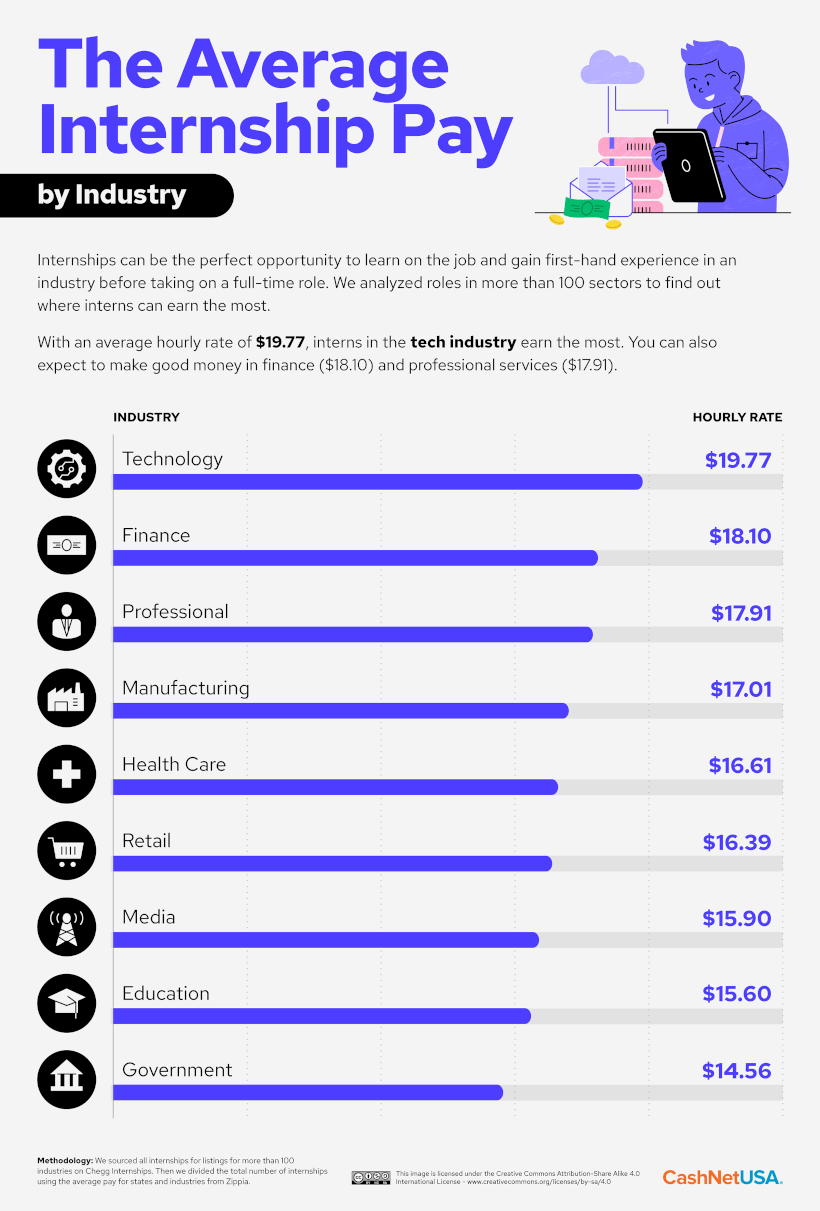
Both industries are, of course, well-known for high pay packages for their employees. They’re on the opposite side of the spectrum from government internships, which rank last despite coveted D.C. positions paying fairly well.
States with the Most Unpaid Internships
Getting an internship doesn’t guarantee pay, and average hourly pay means little in states which have mostly unpaid interns.
In Delaware for example, nearly one-third of internships are unpaid despite otherwise boasting a high average pay.
Click to view this graphic in a higher-resolution.
New York, Oregon, New Mexico, California, and New Jersey all had nearly one-fourth of their listed internships as unpaid.
Meanwhile, the outer Midwest states, including Nebraska and Colorado, have some of the lowest unpaid internship rates of anywhere in the country. In Kansas, despite having some of the lowest internship pay, only 4.2% of internships were unpaid.
Sectors with the Most Unpaid Internships
The finance sector—also the second highest paying—is notorious for rigorous internships, but nearly one-third of listed finance internships were posted with no pay, and only experience.
That’s nearly twice the rate of the second-most unpaid internship sector: retail.
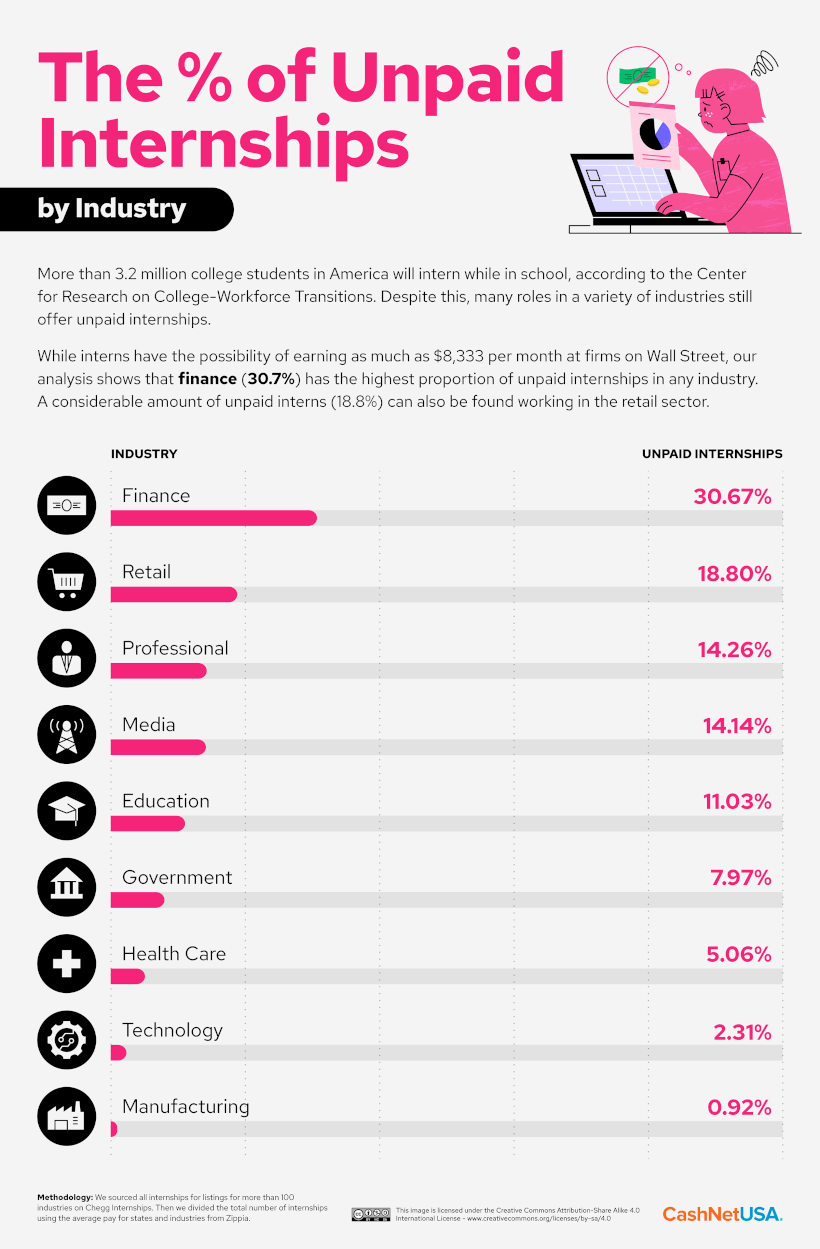
Interestingly, the tech sector had the second-fewest unpaid internships, despite paying the highest hourly rate. Only manufacturing has fewer unpaid internships.
A majority of students surveyed from the National Association of Colleges and Employers (NACE) found that those who took unpaid internships had a slightly higher positive correlation in networking than a paid internship. However, they also had a negative correlation with both employment and salary satisfaction.

This article was published as a part of Visual Capitalist's Creator Program, which features data-driven visuals from some of our favorite Creators around the world.
Automation
Charted: Changing Sentiments Towards AI in the Workplace
Opinions about using AI in the workplace have undergone a transformation from 2018, and so have the AI tools themselves.
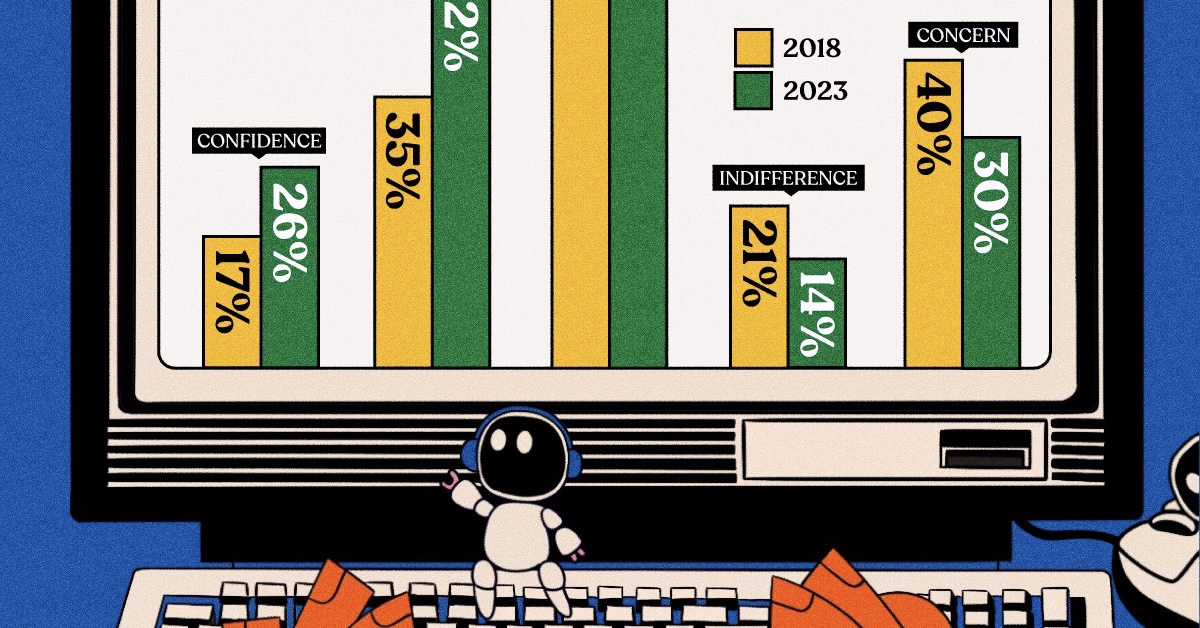
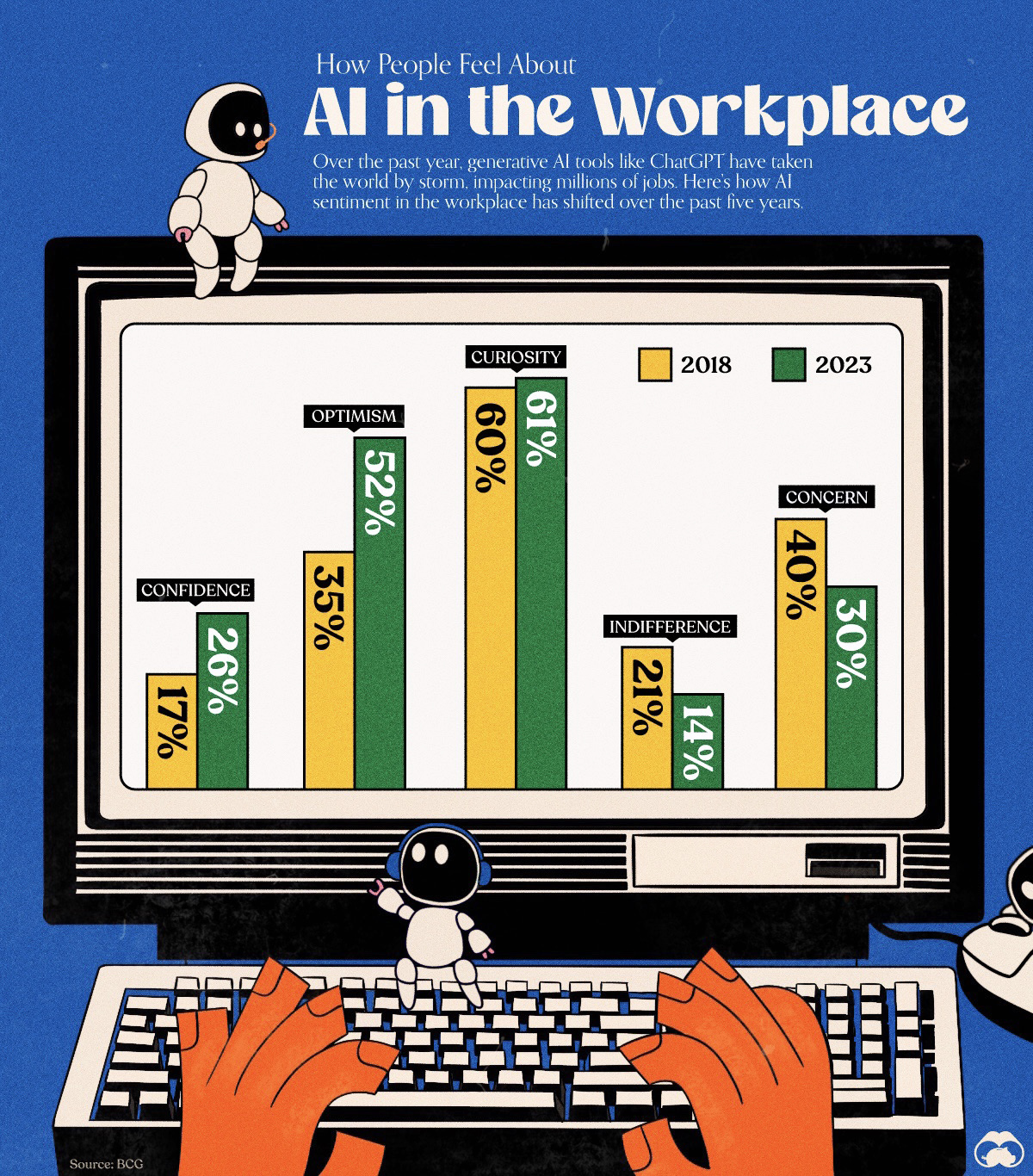
Is generative AI the catalyst for the next industrial revolution? Or is it a flash in the pan? Is the entire workforce destined to become AI makers and managers?
It’s possible that one, all, or none of these options could be correct. But despite how fast large language models (LLMs) and tools have grown the popularity of artificial intelligence, one thing that is clear is that there are no quick or easy answers.
Amidst all this uncertainty, opinions on how we use AI in the workplace have evolved. Recent survey data from Boston Consulting Group (BCG) reveals how the labor force feels about AI in the workplace today, compared to how they felt five years ago.
The consultancy surveyed 13,000 people (C-suite leaders, managers, and frontline employees) in 18 different countries for the results, and divided their top two responses into five categories: Curiosity, Optimism, Concern, Confidence, and Indifference.
More Optimism, Less Caution Around AI
General curiosity about AI remains almost unchanged (at 60%) since 2018.
Meanwhile, despite how rapidly AI has advanced in the last five years, or perhaps because of it, more than 50% of workers surveyed are optimistic about AI’s impact on work, a 17 percentage point (p.p.) increase from 2018.
And though 30% remain concerned about AI, this fell 10 p.p. over the same time period.
| Sentiment towards AI | 2018 | 2023 |
|---|---|---|
| Curiosity | 60% | 61% |
| Optimism | 35% | 52% |
| Concern | 40% | 30% |
| Confidence | 17% | 26% |
| Indifference | 21% | 14% |
Clearly, respondents perceive AI in the workplace far more positively now than they did in 2018. But that’s not all. The respondents’ confidence in how AI can influence their work has also increased (+5 p.p.) and indifference towards it has shrunk significantly (-7 p.p.).
Given the explosive growth in generative AI since the end of 2022—ChatGPT gets 1.8 billion visitors a month—it’s not surprising that workers are far more aware of AI compared to just five years ago.
Optimistic Leaders, Cautious Employees
As with any survey data, the devil is in the details. BCG notes that the sentiments between rungs on the company ladder differ sharply around AI.
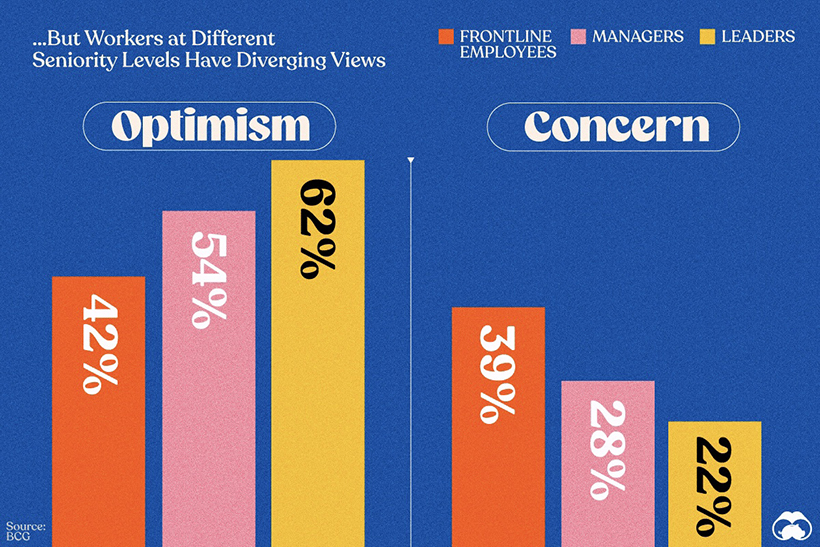
While two-thirds of polled leaders are optimistic about AI in 2023, less than half of polled frontline employees shared the same sentiment. Frontline employees were also the biggest group that responded with concern (nearly 40%).
Importantly, frontline employees are almost as optimistic as they are concerned about AI in the workplace.
| Position | Optimism | Concern |
|---|---|---|
| Leaders | 62% | 22% |
| Managers | 54% | 28% |
| Frontline Employees | 42% | 39% |
Managers were closer to leaders in their AI optimism, though some experts believe their jobs might actually be the most at risk of being replaced all together.
More Use, More Optimism Around AI
With ChatGPT reaching 100 million active users just two months after launching, it’s clear that more and more people are experimenting with generative AI.
In BCG’s poll, regular AI users—categorized as people who use it at least once a week for work—are nearly three times more optimistic than concerned about AI’s impact on their work in 2023.
| AI Use Level | Optimism | Concern |
|---|---|---|
| Regular | 62% | 22% |
| Rare | 55% | 27% |
| None | 36% | 42% |
Even rare users are two times more optimistic than cautious, with the non-user category registering the most concern.
Which brings us to who these regular users are.
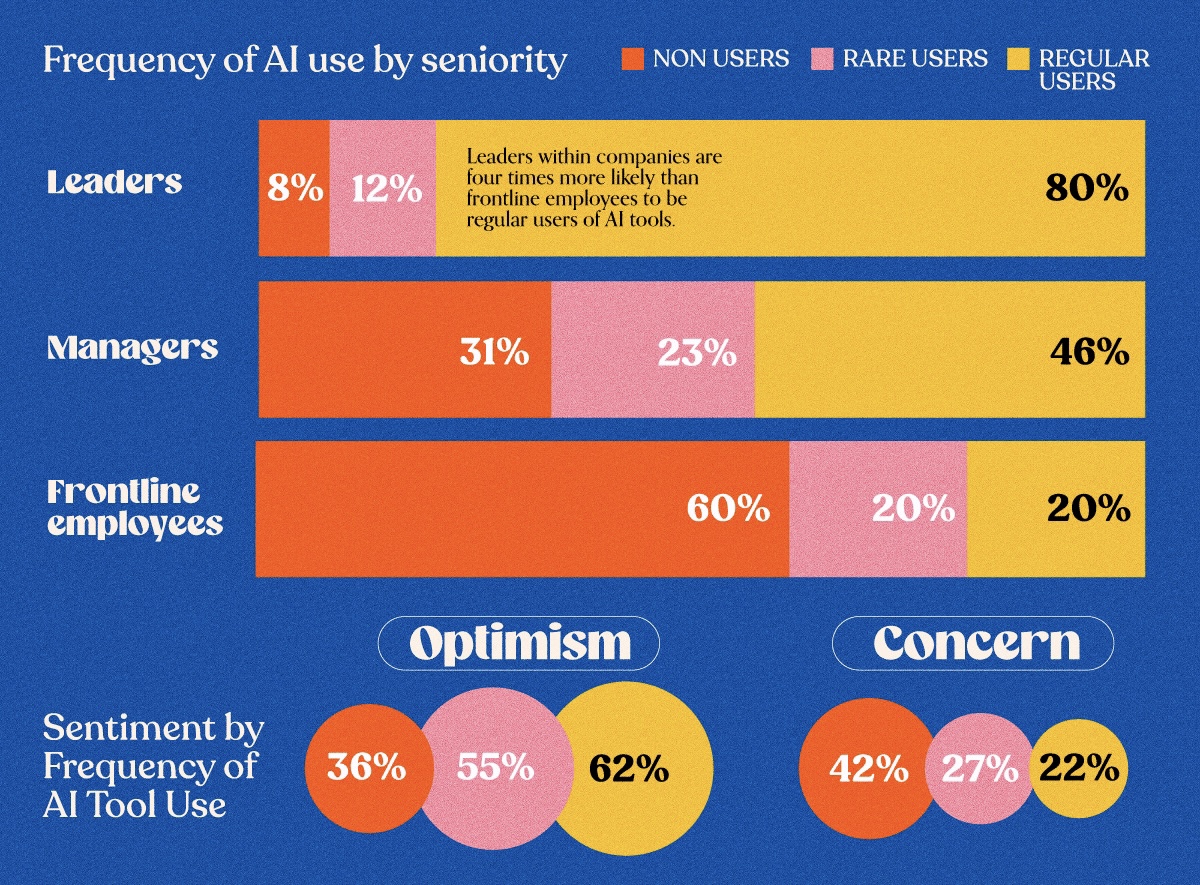
A staggering 80% of the leaders polled say they’re already regular users of AI, compared to 46% managers and 20% frontline employees.
While eyebrow-raising, these figures are not surprising.
People in leadership positions tend to have a mandate to stay ahead of the curve on current business trends, and along with their less strictly defined roles, have more freedom to try, use, and adopt AI tools while they formulate policies for their workplace.
| Position | Regular User | Rare User | Nonuser |
|---|---|---|---|
| Leaders | 80% | 12% | 8% |
| Managers | 46% | 23% | 31% |
| Frontline Employees | 20% | 20% | 60% |
At the same time, AI tools may not be green-lit en masse in many workplaces yet, preventing frontline employees from giving them a go.
So Is AI Coming For Jobs or Not?
Regardless of how definitively one can make a claim about artificial intelligence taking away people’s jobs, the survey respondents were unanimous that AI in the workplace will have some kind of an impact on their employment.
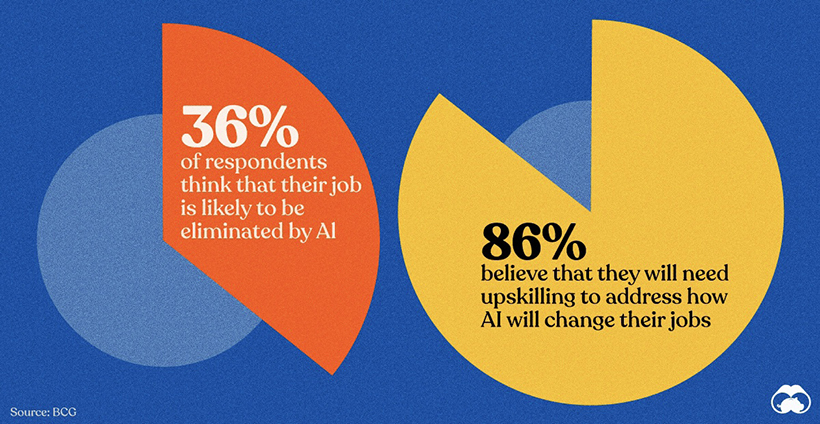
Slightly more than one-third felt that their job is in jeopardy as of 2023, while an overwhelming 86% polled said they needed training to adapt to how AI will transform their work.
With how fast the field is currently transforming, upskilling could be the safest path to follow as the AI revolution unfolds.
Where Does This Data Come From?
Source: The AI at Work: What People Are Saying report from the Boston Consulting Group.
-

 Environment5 days ago
Environment5 days agoHotter Than Ever: 2023 Sets New Global Temperature Records
-

 Datastream4 weeks ago
Datastream4 weeks agoCan You Calculate Your Daily Carbon Footprint?
-

 Energy2 weeks ago
Energy2 weeks agoWho’s Still Buying Russian Fossil Fuels in 2023?
-

 VC+4 days ago
VC+4 days agoWhat’s New on VC+ in July
-

 Investor Education4 weeks ago
Investor Education4 weeks agoVisualizing BlackRock’s Top Equity Holdings
-

 apps2 weeks ago
apps2 weeks agoMeet the Competing Apps Battling for Twitter’s Market Share
-

 Politics17 hours ago
Politics17 hours agoHow Do Chinese Citizens Feel About Other Countries?
-

 Markets4 weeks ago
Markets4 weeks agoVisualizing Every Company on the S&P 500 Index

